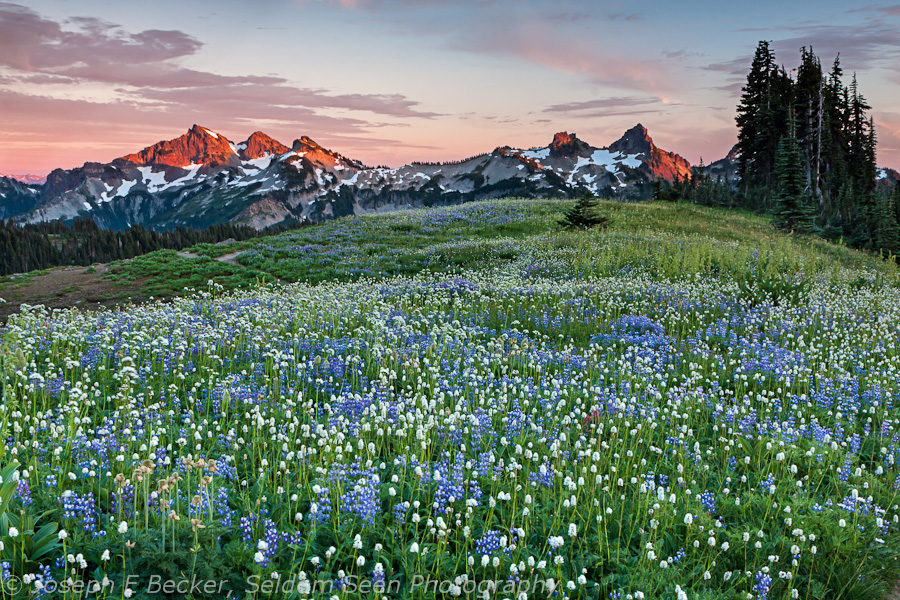 Wind is often the bane of nature photographers. We are often photographing in fairly low light conditions at sunrise or sunset, and often want a wide depth of field, so end up using small f-stops. Most of us know that using high ISOs leads to objectionable digital noise. These conditions all combine to require a slow shutter speed. So what do you do if there is a breeze moving your foreground around. Not a problem with rocks as a foreground, but what about wildflowers?
Wind is often the bane of nature photographers. We are often photographing in fairly low light conditions at sunrise or sunset, and often want a wide depth of field, so end up using small f-stops. Most of us know that using high ISOs leads to objectionable digital noise. These conditions all combine to require a slow shutter speed. So what do you do if there is a breeze moving your foreground around. Not a problem with rocks as a foreground, but what about wildflowers?
The above photo of the Tatoosh Range was taken at Paradise on the Golden Gate trail last month shortly before sunset. To get both the flowers and the mountains in acceptable focus, I took one shot with the aperture at set f/16 and the ISO at 100. This resulted in a shutter speed of 4 seconds (I also used a split neutral density filter). There was a breeze and it was impossible to get a frame without some movement in the flowers.
I then shot another image with the aperture at f/11 and the ISO set to 1250. This allowed the shutter speed to be 1/8 seconds. This was enough to stop most of the flower movement; but as you might imagine, the noise was unacceptable.
To get the above image, I processed both photos in Lightroom and imported them into Photoshop. I used the low ISO image as the background layer, then added the high ISO image in a new layer and added a layer mask filled with black (making none of the high ISO image visible). Then, using a soft brush, I painted white on the mask wherever the flowers were soft due to movement from the breeze. The end result is the image above. Below are close two closeups that show the before and after effects of painting the high ISO image onto the low ISO one.
This technique to stop the wind doesn’t always work, but when it does, it can save a shot.



Leave a Reply